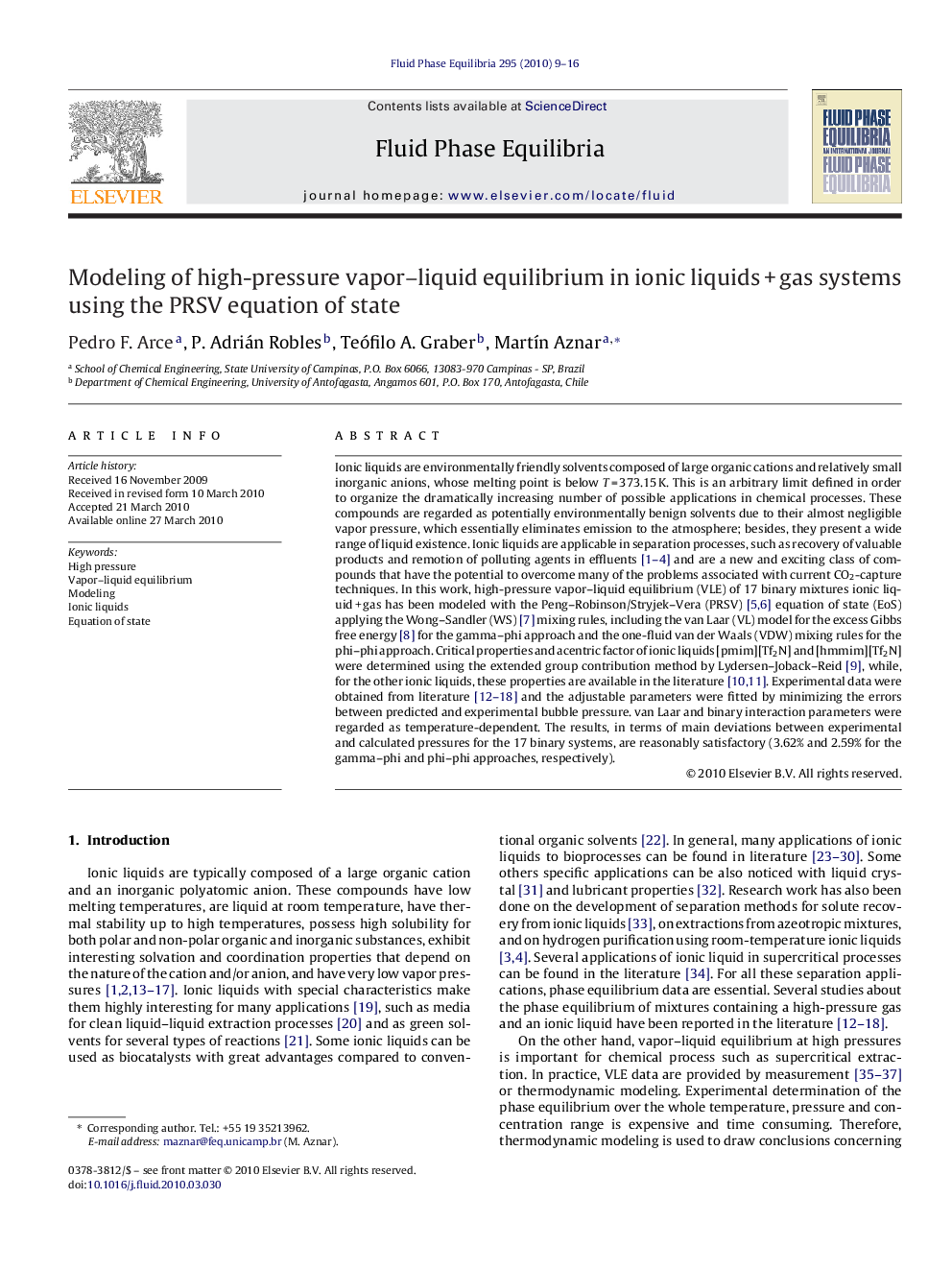| کد مقاله | کد نشریه | سال انتشار | مقاله انگلیسی | نسخه تمام متن |
|---|---|---|---|---|
| 203085 | 460635 | 2010 | 8 صفحه PDF | دانلود رایگان |

Ionic liquids are environmentally friendly solvents composed of large organic cations and relatively small inorganic anions, whose melting point is below T = 373.15 K. This is an arbitrary limit defined in order to organize the dramatically increasing number of possible applications in chemical processes. These compounds are regarded as potentially environmentally benign solvents due to their almost negligible vapor pressure, which essentially eliminates emission to the atmosphere; besides, they present a wide range of liquid existence. Ionic liquids are applicable in separation processes, such as recovery of valuable products and remotion of polluting agents in effluents [1], [2], [3] and [4] and are a new and exciting class of compounds that have the potential to overcome many of the problems associated with current CO2-capture techniques. In this work, high-pressure vapor–liquid equilibrium (VLE) of 17 binary mixtures ionic liquid + gas has been modeled with the Peng–Robinson/Stryjek–Vera (PRSV) [5] and [6] equation of state (EoS) applying the Wong–Sandler (WS) [7] mixing rules, including the van Laar (VL) model for the excess Gibbs free energy [8] for the gamma–phi approach and the one-fluid van der Waals (VDW) mixing rules for the phi–phi approach. Critical properties and acentric factor of ionic liquids [pmim][Tf2N] and [hmmim][Tf2N] were determined using the extended group contribution method by Lydersen–Joback–Reid [9], while, for the other ionic liquids, these properties are available in the literature [10] and [11]. Experimental data were obtained from literature [12], [13], [14], [15], [16], [17] and [18] and the adjustable parameters were fitted by minimizing the errors between predicted and experimental bubble pressure. van Laar and binary interaction parameters were regarded as temperature-dependent. The results, in terms of main deviations between experimental and calculated pressures for the 17 binary systems, are reasonably satisfactory (3.62% and 2.59% for the gamma–phi and phi–phi approaches, respectively).
Journal: Fluid Phase Equilibria - Volume 295, Issue 1, 15 August 2010, Pages 9–16